Q&A With Jesse Bravo
Fine Art Photographer
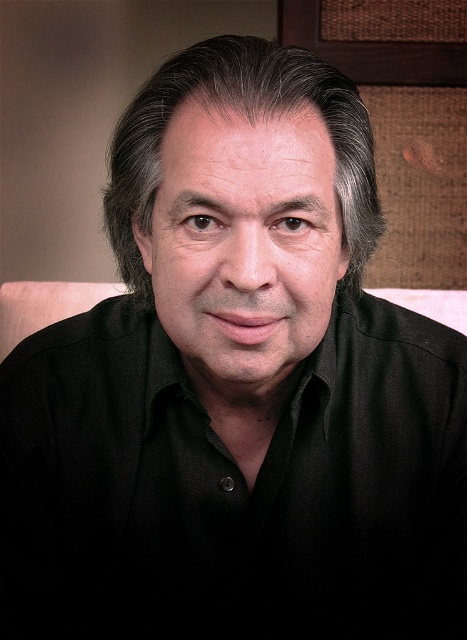
To be a successful fine art photographer one must be excellent at the craft and possess a strong interest in art. But it also takes a certain personality, a prodigious amount of talent and a natural ability to see art and transform it for others to view in an expertly produced photograph. Jesse Bravo, of Fair Oaks CA, is just such an experienced professional.
Bravo honed his skills after graduating in 1962 from the Brooks Institute of Photographic Arts and Science in Santa Barbara, CA where he was class valedictorian. In the 1960s Bravo worked as a photojournalist, most notably for United Press International (UPI). During those years he deftly photographed many celebrities including The Beatles and Frank Sinatra. During the 1980s Bravo served as President and General Manager of the Digital Imaging Division of TRW. His photographic experience also includes extensive work in commercial photography, as well as portraiture, architectural, landscape and food photography.
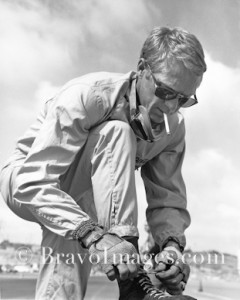
Jesse Bravo, "Steve McQueen," 1963, racing with Bravo and his group in Del Mar, CA. Photo: Bravo Images
Bravo is just as passionate about race cars as he is about photography and has been racing sports cars since the 1960s. He put in many track hours in his 1957 MGA and carefully restored his silver 1963 Jaguar E-Type Roadster on his own. Additionally, Bravo served as a judge and Chief of Concourse for numerous SCCA (Sports Car Club of America) Concours de’Elegance and is the co-author of the current SCCA Judging Guidelines.
He enjoyed a brief retirement period in the late 1990s but re-entered the workplace in 2002 as the Crocker Art Museum’s (Sacramento, CA) designated digital photographer. Bravo spent several years digitally photographing the entire Crocker art collection, which was then published in a beautiful book. The book’s publication coincided with the 2010 opening of the new wing of the Crocker.
I sat down with Bravo at Boulevard Coffee in Carmichael, CA, to discuss his career path, his interests, and his current projects. The following are highlights of that exchange.
Stein: Is it correct to refer to you as a fine art photographer?
Bravo: Correct.
Stein: How different is photographing fine art from photojournalism?
Bravo: Photographing fine art is a challenge because you have to know the small nuances such as what to do with reflections and when to use polarizing filters. The technical side is complex with digital technology. It differs quite a bit from photojournalism.
Stein: Can you provide an example?
Bravo: Back in the 60s when I was shooting celebrities I had to be prepared technically and, I also had to be prepared to quickly get the shot. When I photographed the Beatles, I knew what I wanted: the four of them together. I stopped them as they were walking down the stairs from an airplane onto the tarmac at SFO. What I wanted was the four of them together. So I stopped them by asking them to get together. I did a lot of weddings and was used to directing people. To my surprise, they stopped. I saw what I wanted and had time for just one shot. In an instant you had to compose it. I only had ten seconds. In the studio, shooting fine art, you have the advantage of time: time to set up the shot. The problem back then was that you had to shoot the shot in its entire form. Today you can use Photoshop to edit the picture. It allows you more freedom to be creative.
Stein: What kind of camera did you use for that Beatles shot?
Bravo: A Hassleblad, 2 and ¼ with Tri-X film, ASA 400.
Stein: Who or what influenced your interest in photography?
Bravo: When I was young I wanted to go into law enforcement because my sister was in it. Then I started doing photography when my parents bought me a twin-lens camera from Montgomery Ward. In high school I took pictures for the yearbook and got to know the portrait photographer and hung out in his studio. He had gone to Brooks, so I decided to apply there. I also applied to the Arts Center in LA. But I liked Santa Barbara better and decided to go there.
Stein: You spent five years digitally photographing the Crocker Art Museum’s collection. Are you still involved with the museum?
Bravo: Yes, I have a studio there and do work as projects come up. I’m looking forward to photographing pieces for an upcoming Asian art exhibit. I’ll be photographing various objects for that exhibit’s catalogue. Another book is being published soon for the Crocker that I also did the photography for. It’s for an upcoming exhibit of Clayton Bailey’s art and sculpture. He taught at Hayward State College (CA). Apparently, Mad Magazine inspired a lot of his art. (Bailey calls himself, the “Mad Scientist.”)
Stein: Can you describe a typical day at the Crocker?
Bravo: The art that I need to photograph will either be there, or I’ll have to coordinate with the registrar to get pieces moved into the photo studio. Then I work on the set up. It differs for three-dimensional pieces than for one-dimensional paintings. Next I test the lighting. Then I align the camera so everything is parallel, so there is no distortion. Focus is very critical to flat art.
Stein: I read that you were instrumental in developing a technique for aligning the camera. Can you talk about that?
Bravo: Yes, I invented the Dian-Align jointly with curator Diana Daniels while trying to solve a solution for a non-contact camera alignment with the art. It’s named after curator Diana Daniels whom I was working with at the time. When I started at the Crocker, the only thing available was the Zig-Align. In order for it to work, its mirrors actually touch the canvas, which is not good for the art. With the Dian-Align, I align the camera using a mirror system. The system has three points and a digital tape that measures in inches and millimeters, which I prefer for accuracy. Once the three points are aligned, I take a reading and never have to touch the art. It’s manufactured by North Lights in Redwood City, CA and is now being used by other museums and fine art photographers (including the Nevada Museum of Art and the Berkeley Art Museum).
Stein: What kind of camera do you use for your fine art photography?
Bravo: I use a Cambo 4X5 camera, made in Holland, with a Better Light scan back that produces 216-megapixel images. I have twelve lenses in my case — ranging from 45mm to 210mm — and I use them all, depending on the situation.
Stein: What other equipment is important?
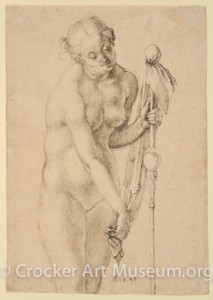
Jesse Bravo Photo of Albrecht Durer's Drawing, "Female Nude with a Staff," 1498, Pen and dark brown ink on paper. Image: Crocker Art Museum
Bravo: Lights that are specially made for art reproduction. Mine are three feet tall, have 900 watts, emit no ultra violet rays and produce very little heat. I also use a studio stand/camera stand similar to a tripod. It’s a large adjustable column that is easy to use. Because the Crocker has one of the largest European drawing collections, I use a Kaiser Repro Table to photograph drawings. The table has motorized columns.
Note: The Crocker Art Museum owns nearly 1,500 European Master Drawings dating from the 16th century. This exceptional collection is housed in the Anne and Malcolm McHenry Works on Paper Study Center and exhibition space. By appointment, the center is open to scholars, artists, and the public.
Stein: How many images do you typically shoot for each art object?
Bravo: Just one. I can see it on the computer so I know what I’m getting. But if it’s a really important piece, I’ll do one overall shot and then three pieces and stitch them together. This is especially important if I want to get all of the detail and texture of the paper or canvas.
Stein: Are certain objects easier to shoot than others?
Bravo: Yes, some do go faster than others. I recently shot a piece for the Sacramento Arts Commission by local artist Gregory Kondos that took all day. The painting is 12-feet by 8-feet and was commissioned for the new terminal at the Sacramento airport. I only had 30-inches of space to light it. I normally like at least six or eight feet for large pieces. At the Crocker, a painting of Yosemite by Thomas Hill (“Great Canyon of the Sierras, Yosemite,” 1871, Oil on Canvas) had to be done in four sections and took me four hours just for one shot. Some works take up to two days to photograph.
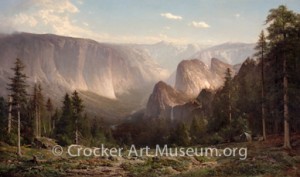
Jesse Bravo Photo of Thomas Hill Painting, "Great Canyon of the Sierras, Yosemite," 1871, Oil on canvas. Image: Crocker Art Museum.
Stein: Is there an editing process?
Bravo: I do my editing immediately after I shoot the photo so I can match the colors correctly (Bravo uses software by Nik).
Stein: Who gets the final say on a photo, you or the museum?
Bravo: They rely on me to decide what looks best. I give them one image to use. Sometimes I do give them a choice with an alternative picture. I am fortunate they rely on me to pick the shots. For the Swidler Collection I was given guidelines from Diana Daniels the curator, but she let me decide on each photo. (The Sidney Swidler Collection at the Crocker consists of more than 800 pieces of 20th century ceramics made by over 300 different artists)
Stein: Do you ever Photoshop an image?
Bravo: I exclusively use Photoshop because it uses old darkroom techniques that I learned at the Brooks Institute. They’ve taken Ansel Adams’s zone-metering and put it into a computer software program.
Stein: What are the major challenges of fine art photography?
Bravo: The biggest challenge is that every single piece of artwork is different, even if they are similar paintings. The colors and textures are always changing and you have to treat them differently. Blues and yellows are very difficult to record and you have to treat them differently through filtering and lighting.
Stein: What is most satisfying in your work?
Bravo: The most satisfying part is getting the results to match the originals. It’s also satisfying to meet the artists themselves and the collectors who are all very interesting people.
Stein: Conversely, what is the least satisfying part of your work?
Bravo: Moving my studio to the various shooting locations. I wish I had an assistant.
Stein: Are you still doing architectural photography?
Bravo: I love architecture as much as anything else. Recently I’ve been photographing architecture for my niece’s husband’s website. It’s very creative. You look for the best composition to show off the building or room. In the old days, not too long ago, maybe two years ago, you would bring in lighting. The problem with lighting is that you have to make it look natural. But now we have advanced software that merges different lighting for you — that’s the beauty of it. It took me three or four days to shoot the Stanford Mansion (Leland Stanford Mansion, former governor’s residence, Sacramento, CA). Now I could probably do it in a day. And, I hate to say it, but the results would be better.
Stein: What other projects are you currently working on?
Bravo: I have many irons in the fire. I’ve digitized all of the black and white celebrity photos I shot during my freelance photojournalist days and will be selling them as silver gelatin prints or pigment ink prints.
Stein: You probably get a lot of requests for your work.
Bravo: I’m still doing everything but weddings. I’m selective at this point. I only do work I enjoy. I recently got a phone call from Leslie Reynolds (widow of Kingston Trio member Nick Reynolds). She asked for permission to use one of my photos of Nick. I told her about fifty other pictures I had taken that she hadn’t seen. They will be used in an upcoming documentary on the Kingston Trio and will appear in the Library of Congress.
Stein: What else do you have going on?
Bravo: I’m working on photos for the upcoming Asian art exhibit at the Crocker. And, I’m doing work for the Nevada Museum of Art in Reno. They purchased camera equipment through a grant but didn’t have anyone to use it. They called the Crocker for suggestions and I was recommended. During the job interview they asked me what I did for the Crocker. So I showed them six books of my work. The next question was, when can you start?
Stein: What do you do on your days off?
Bravo: I work out and I work on my cars. You can never keep up with all the chores around the house.
Stein: Do you have time to read? If so, what are you reading?
Bravo: I love reading. I’m currently reading “Unbroken” by Laura Hillenbrand.
Stein: After photographing so much art, is there a favorite medium or artist?
Bravo: I’m partial to California artists including Thomas Hill, Greg Kondos and Wayne Thiebaud. I also like impressionism.
Stein: Do you consider yourself an artist?
Bravo: Not really. I just happen to like art. I have to let what I do speak for itself. If some people think it’s a snapshot, then it’s a snapshot. I’m a photographer.
Stein: You’ve had quite a fascinating career in photography. What has been your favorite assignment?
Bravo: Photographing a work by Renoir. A distant relative of Renior had an exhibit at the Crocker. I was able to handle a very valuable painting.
Stein: Do you have a favorite photograph or subject matter from your own collection?
Bravo: They’re all interesting to me.
Stein: If you could go anywhere and shoot any subject, what would that be?
Bravo: I would like to go to the Hermitage in St. Petersburg, Russia. They have so much art.
Stein: What advice would you give up and coming photographers?
Bravo: Be an accountant or attorney. But if photography is a passion, pursue it and shine.
Stein: Are they any photographers whom you particularly admire?
Bravo: Yes, I have admiration for Ansel Adams, Richard Avedon, Weegee (Arthur Fellig) for his quirkiness, and Alfred Eisenstadt. As far as I’m concerned, Yousef Karsh was the best portrait photographer ever. As for contemporary photographers, I admire, Stephen Johnson of Half Moon Bay, CA. His landscapes are incredible.
Stein: Where can people see your work?
Bravo: On my website: BravoImages.com or at Crockerartmuseum.org.
Stein: What have you learned from your work?
Bravo: I’ve learned that there is a lot of great art, and art that’s not so great.
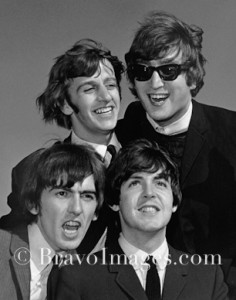
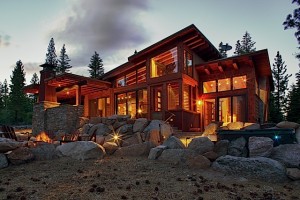
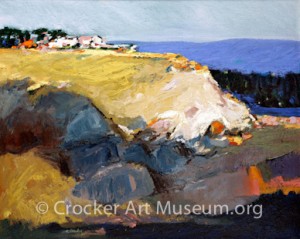



It is rare to be able to see into the mind of an artist. Thank you, Lesley, for facilitating this. I had not heard of Jesse Bravo. His photographs definitely pull you into its subject!
Great interview! Even though I recognized several of his photos, I did not recognize the name. Thanks for sharing his insights.
I worked with Jesse Bravo in Sacramento at the micrographics company. I was aware of his inteest in foreign cars but, had no idea about the rest. He was a quiet man but, always very nice. Wish I’d known more about him then.
Jeez, you still look like Neil Diamond. Everywhere I go, if it has anything to do with photography, they know you. Last example is Cox B/W. I found an old 4X5 of my first car, an Austin Healy 100, and a negative of our 1961 Homecoming Queen I shot in our HS Photo instructor’s studio…Pan X, that I developed in Microdol X…hopefully, I’ll get something worthy of hanging at Wally’s store.
Kindest always,
Bill M